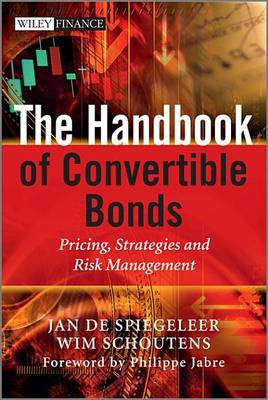The Wiley Finance
2 primary works • 3 total works
Book 540
The book brings in high-tech financial engineering models for the detailed modelling of credit risk instruments, setting up the theoretical framework behind the application of Levy Processes to Credit Risk Modelling before moving on to the practical implementation. Complex credit derivatives structures such as CDOs, ABSs, CPPIs, CPDOs are analysed and illustrated with market data.
Book 583
Part I of the book covers the impact that the 2008 credit crunch has had on the markets, it then shows how to build up a convertible bond and introduces the reader to the traditional convertible vocabulary of yield to put, premium, conversion ratio, delta, gamma, vega and parity. The market of stock borrowing and lending will also be covered in detail. Using an intuitive approach based on the Jensen inequality, the authors will also show the advantages of using a hybrid to add value - pre 2008, many investors labelled convertible bonds as 'investing with no downside', there are of course plenty of 2008 examples to prove that they were wrong. The authors then go onto give a complete explanation of the different features that can be embedded in convertible bond.
Part II shows readers how to price convertibles. It covers the different parameters used in valuation models: credit spreads, volatility, interest rates and borrow fees and Maturity.
Part III covers investment strategies for equity, fixed income and hedge fund investors and includes dynamic hedging and convertible arbitrage.
Part IV explains the all important risk management part of the process in detail.
This is a highly practical book, all products priced are real world examples and numerical examples are not limited to hypothetical convertibles. It is a must read for anyone wanting to safely get into this highly liquid, high return market.
The Handbook of Hybrid Securities
by Jan De Spiegeleer, Wim Schoutens, and Cynthia Van Hulle
* Describes a unique, quantitative approach to hybrid valuation and risk management that uses new structural and multi-factor models * Provides strategies for the full range of hybrid asset classes, including convertible bonds, preferreds, trust preferreds, contingent convertibles, bonds labeled "additional Tier 1," and more * Offers an expert review of current regulatory climate regarding hybrids, globally, and explores likely political developments and their potential impact on the hybrid market * The most up-to-date, in-depth book on the subject, this is a valuable working resource for traders, analysts and risk managers, and a indispensable reference for regulators


